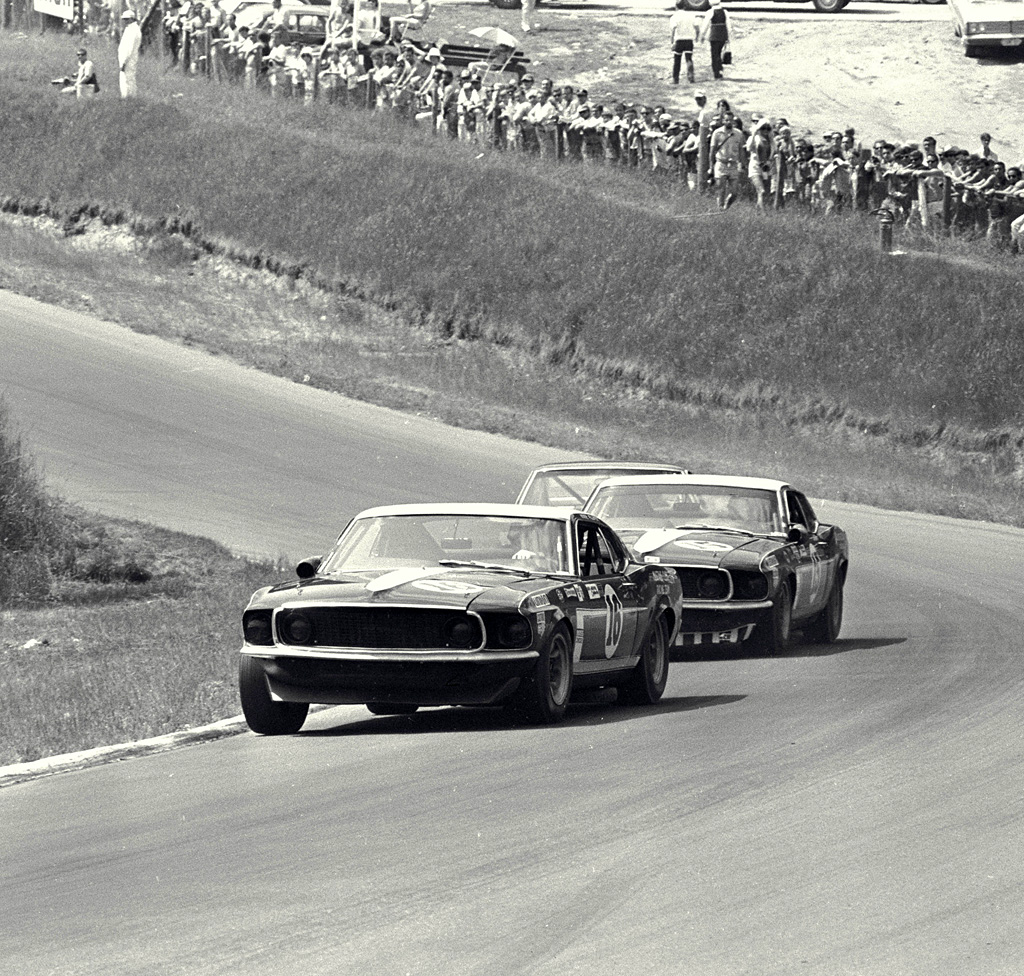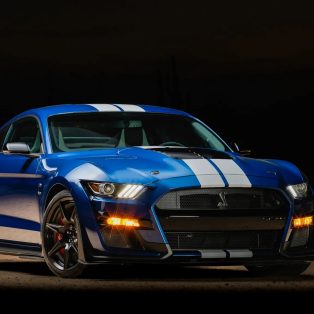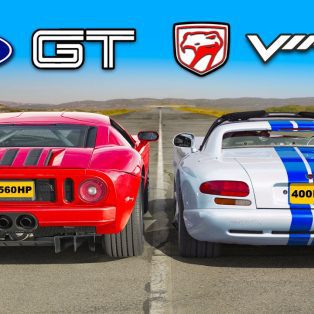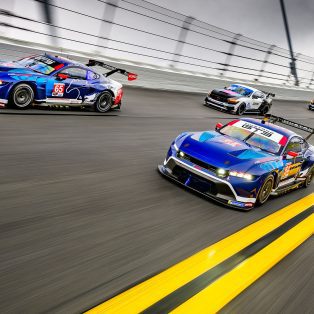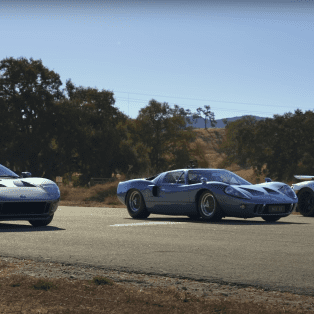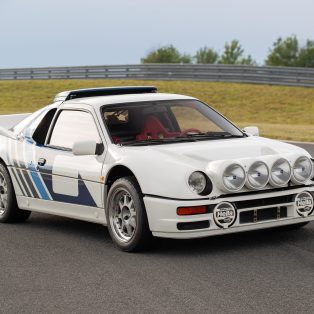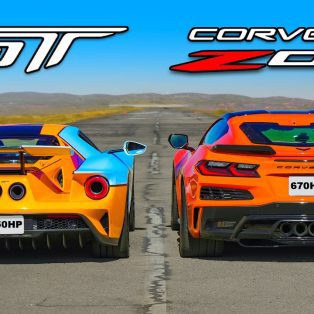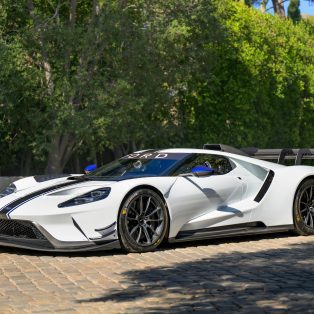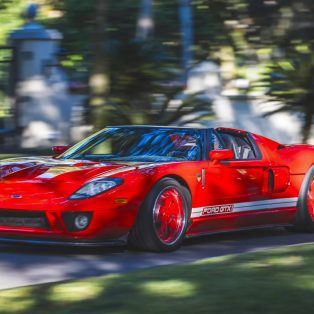1969 Ford Mustang BOSS 302 Trans-Am
For the 1969 Trans-Am Season, Ford and Kar Kraft helped both Shelby and Bud Moore prepare race versions of their M-Code Mustang to take on the Penke Camaros. Unlike the street cars these were completely reengineered and shared on some very basic components with the road-going BOSS 302.
Unlike previous seasons which were handled almost exclusively by Shelby, Ford decided use their own engineering talents at Kar Kraft for the 1969 season contender. This opened the door for Bud Moore to field two cars for complete season alongside the Shelby team. Both teams fought to regain the title from the Penske Camaros, but 1969 was not their year.
Ford president Semon “Bunkie” Knudsen personally ensured the 1969 Mustang had the style and performance that would help it succeed. Part of the right package came from Larry Shinoda at the Special Design Centre who encouraged the fastback model in Trans-Am and also designed the cars radical graphics and the BOSS name.
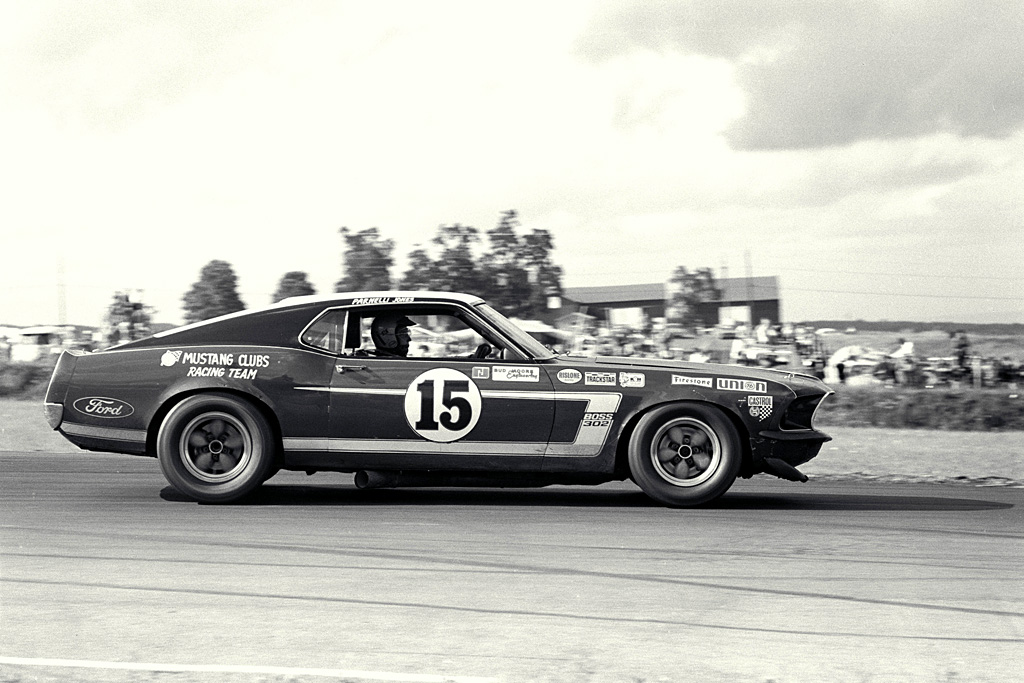
Engineering
Kar Kraft in Brighton, Michigan built the first factory prototypes for the 1969 season. These were built from 428 Cobra Jet fastbacks and fully built up by Lee Dykstra’s team. After the team reached a final specification, seven more M-code Mustangs were ordered and converted by the race teams themselves except one built by Kar Kraft to for Smokey Yunick to race in NASCAR’s ‘Baby Grand’ stock car series.
The Kar Kraft blueprints called for a radically-altered car from standard specification. The cars were essentially stripped and re-engineered with weight distribution and the 2900 lbs limit in mind. Subtle changes included relocating the battery, lowering and positioning the 302 engine further back. On some of the cars, the front end bodywork was also modified so the fenders had a greater taper and sat lower to the ground. Both fender wells were pushed inward to provide clearance for the larger wheels and tires. Finally, Kar Kraft developed strut-tower braces and the individual teams made a roll cages that contributed to overall rigidity.
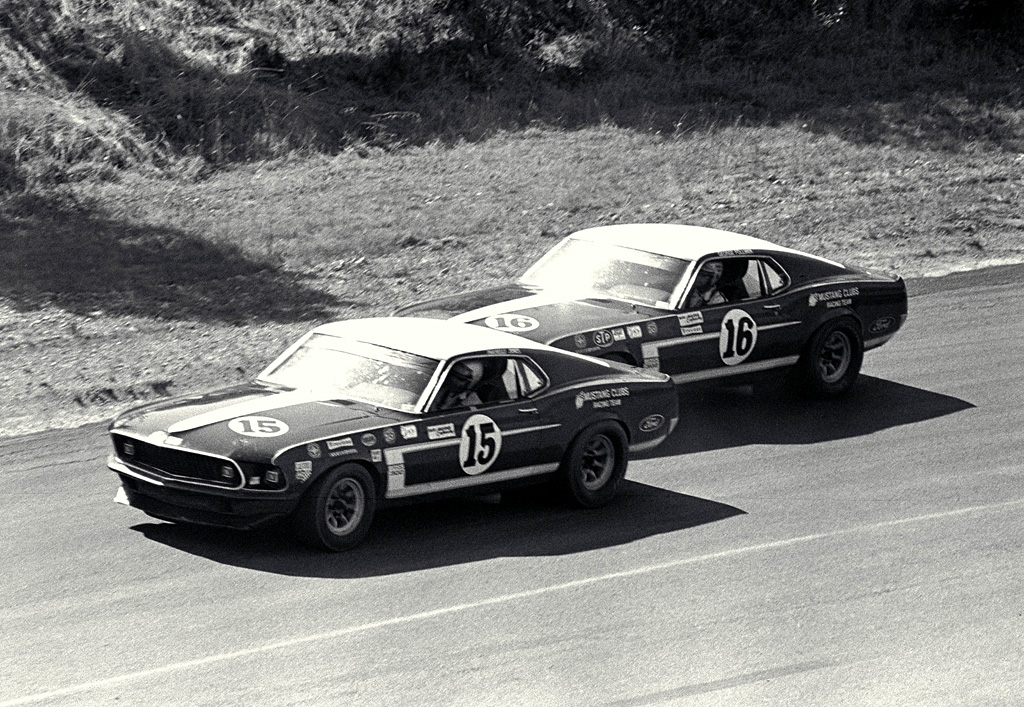
George Follmer (#16) and Parnelli Jones (#15) in their Bud Moore Mustangs during race.
CD#0777-3292-0894-9.
On this new platform the car was rebuilt using all-new components. This included a lower fuel tank and fabricating lighter components which were sometimes made of aluminum, or lightweight stampings or thinner glass.
Kar Kraft repositioned the suspension system so it sat deeper into the body which had the effect of lowering the car. Almost all the pickup points were relocated, the arms rose-jointed and connections converted to solid metal bushings. Braking was handled by 11.96-inch Lincoln discs with 4-piston Kelsey-Hayes calipers up front while the rear drums were replaced by the standard 11.3-inch units.
Engines for the 1969 BOSS came from a new design which similar to the road-cars, used the 351 Cleveland cylinder head on a 302 Windsor block. Specially built engines for racing used a completely new bottom and top end with two 1050cfm Holley Dominator 4-Barrel Carburetors on a ‘Cross-Boss’ manifold. Ford reported 470 bhp during the mid-season.
In Detail
| type | Racing Car |
| built at | Brighton, Michigan, USA |
| coachbuilder | Kar Kraft |
| engineers | Lee Dykstra |
| production | 10 |
| engine | V8 |
| block material | Cast Iron w/Aluminum Heads |
| valvetrain | OHV |
| fuel feed | 2 Holley Dominator 4-Barrel Carburetors |
| displacement | 4949 cc / 302 in³ |
| compression | 12.0:1 |
| power | 350.5 kw / 470 bhp |
| specific output | 94.97 bhp per litre |
| bhp/weight | 356.87 bhp per tonne |
| redline | 8000 |
| body / frame | Steel |
| driven wheels | RWD w/3.9 Traction-Loc diff |
| wheel type | Magnesium American Racing or Minilite |
| front tires | 5.00 x 11.30 |
| rear tires | 6.00 x 12.30 |
| front brakes | Lincoln Discs w/4-Piston Kelsey-Hayes Callipers |
| rear brakes | Ford Discs |
| front wheels | F 38.1 x 17.8 cm / 15.0 x 7.0 in |
| rear wheels | R 38.1 x 17.8 cm / 15.0 x 7.0 in |
| steering | Recirculating Ball w/Power Assist |
| f suspension | Fully Adj Double Wishbones w/Koni Shock Absorbers. |
| r suspension | Solid Axle w/Leaf Springs, Traction Bars, Kar Kraft Panhard Rod |
| curb weight | 1317 kg / 2900 lbs |
| wheelbase | 2743 mm / 108.0 in |
| front track | 1511 mm / 59.5 in |
| rear track | 1511 mm / 59.5 in |
| length | 4760 mm / 187.4 in |
| width | 1824 mm / 71.8 in |
| height | 1280 mm / 50.4 in |
| transmission | Ford Top Loader 4-Speed Manual |
| gear ratios | 2.78:1 |
| 0 – 1/4 mile | ~12.9 seconds |
Story by Ford Motor Co





